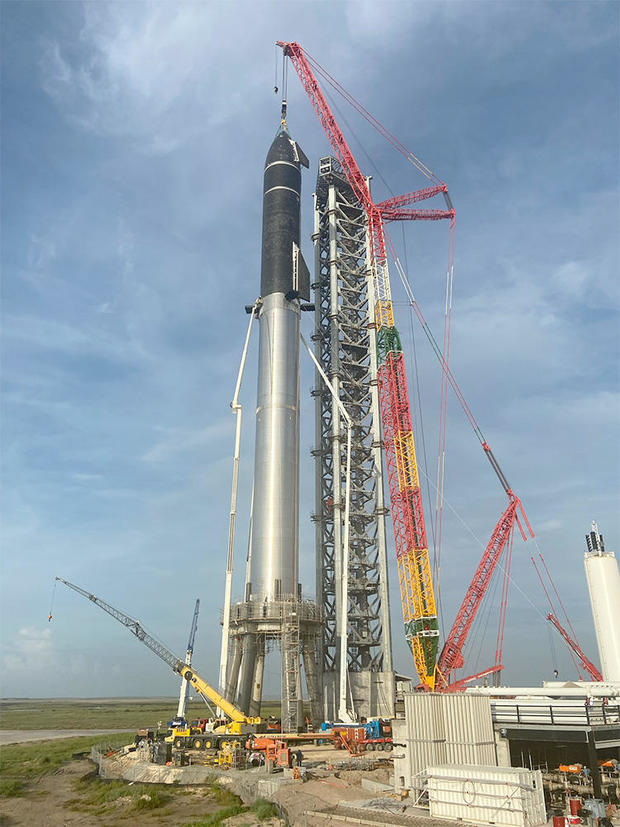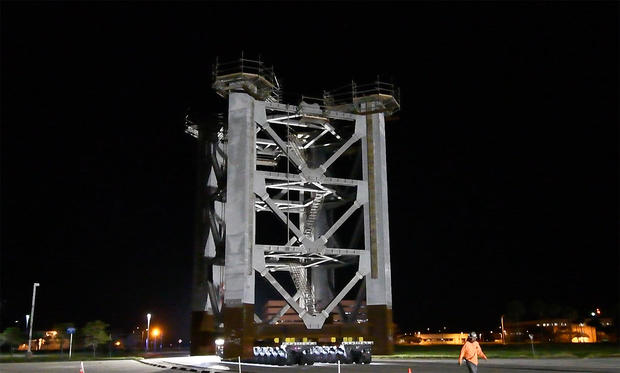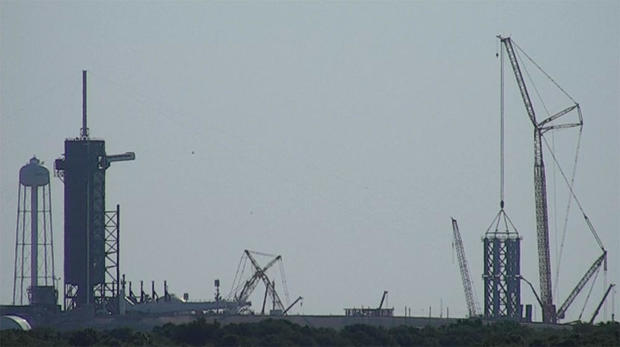NASA, SpaceX to assess potential Starship threat to Crew Dragon pad
SpaceX is building a towering new gantry at the Kennedy Space Center's complex 39A to launch its 394-foot-tall Super Heavy-Starship rocket, but NASA said Thursday it will not grant permission to fly until it assesses the possible threats to a nearby pad used to send astronauts to the space station.
The new gantry and launch stand are being built within about 1,000 feet of NASA's original 39A firing stand, now leased by SpaceX, where Falcon 9 rockets blast off carrying cargo and astronauts to the International Space Station.
Reuters reported last week that NASA managers are concerned about the possibility of a catastrophic failure on or just above the new Starship pad that could seriously damage the Falcon 9 launch infrastructure, interrupting SpaceX astronaut flights to the space station aboard Crew Dragon capsules.
"We all recognize that if you had an early failure like we did on one of the early SpaceX flights, it would be pretty devastating to 39A," Kathy Lueders, NASA's space operations chief, told Reuters.
She was presumably referring to an on-pad explosion in 2016 that destroyed a Falcon 9 and its communications satellite payload, severely damaging launch pad 40 at the Cape Canaveral Space Force Station in the process.
The Super Heavy-Starship takes that threat to a different level.
Tipping the scales at about 11 million pounds, the fully reusable next-generation rocket will be the largest, most powerful launcher ever built, generating 16 million pounds of thrust at liftoff — twice that of NASA's Space Launch System moon rocket — using 33 methane-burning Raptor engines.
The 160-foot-tall Starship upper stage, carrying astronauts, cargo or both, will be powered by six Raptors. A variant of the upper stage is being developed under a $2.9 billion NASA contract to serve as the initial moon lander in the agency's Artemis program.
SpaceX repaired and upgraded launch complex 40 in the wake of the 2016 mishap and operates a third Falcon 9 pad at Vandenberg Space Force Base in California. But neither of those facilities is equipped to launch Crew Dragon astronaut ferry ships.
Boeing's Starliner capsule, which will be launched from a crew-ready pad at the Cape Canaveral Space Force Station, is not yet certified for operational use and NASA considers complex 39A critical to ongoing space station operations.
Responding to a query from CBS News, NASA confirmed the Reuters story, saying Thursday SpaceX does not yet have permission to launch from the 39A complex.
"In the coming weeks, NASA and SpaceX will conduct a thorough review to ensure safe operations at the pad and assess redundant launch capabilities for NASA crewed and cargo missions to the International Space Station," NASA said in a statement.
"As part of the review, NASA and SpaceX are assessing all options available including the development of a crew transportation capability at Space Launch Complex 40 on Cape Canaveral Space Force Station in Florida."
Pad 40 has no gantry at present and SpaceX would have to carry out extensive modifications and upgrades to add access to a Crew Dragon atop a Falcon 9, to enable last-minute cargo additions and to provide emergency escape capability.
As for the Super Heavy-Starship, SpaceX already has built a pad at Boca Chica, Texas, where the company plans to begin orbital flight tests soon. It's in the process of building a second Starship pad at 39A, stacking massive open-lattice segments one atop the other using a huge crane.
The first of eight gantry segments was hauled out to the complex last week and a second was attached early Thursday.
The NASA statement said the agency "is responsible for ensuring SpaceX remains compliant with the requirements of the property agreement for the use of Launch Complex 39A."
"These requirements include those related to construction, safety and environmental conditions," the statement said. "At this time, NASA has only provided approval to build. Additional review for hazards, operational impacts and supportability will be required prior to a launch."
And as with all launches from U.S. soil, SpaceX will need a license from the Federal Aviation Administration.







